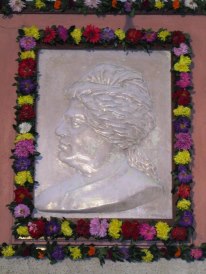This article has multiple issues. Please help improve it or discuss these issues on the talk page . (Learn how and when to remove these messages)
|
| The Vivekananda Institution | |
|---|---|
 Logo | |
| Location | |
 | |
75 & 77 Swami Vivekananda Road Howrah 711104 India | |
| Coordinates | 22°34′42″N88°19′00″E / 22.5784°N 88.3166°E |
| Information | |
| School type | Government Undertaking |
| Established | February 2, 1923 |
| Campus Director | Jhantu Charan Das |
| Headmaster | Shatadal Gayen |
| Number of students | 4,685 (primary house included) passing rate - 91.6% |
| International students | 2 |
| Classes | 12 |
| Language | Bengali, English |
| Hours in school day | 6 |
| Classrooms | 50 |
| Campuses | 1 |
| Houses | 3 |
| Colours | Saffron and white for primary house |
| Sports | Cricket, football etc |
| Affiliations | WBBSE, WBCHSE |
| Website | vivekanandainstitution |

Vivekananda Institution is a high school in West Bengal, India. It is located in the Howrah district of West Bengal. [1] The school was established in 1923 (the first school named after the great Indian sage Swami Vivekananda) and is inspired by his philosophy "Education is the manifestation of the perfection already in man". The school is a leading performer in the secondary and higher secondary exams of the state of West Bengal. The school is located at 75 & 77 Swami Vivekananda Road, Santragachhi, Howrah 711104, India.

